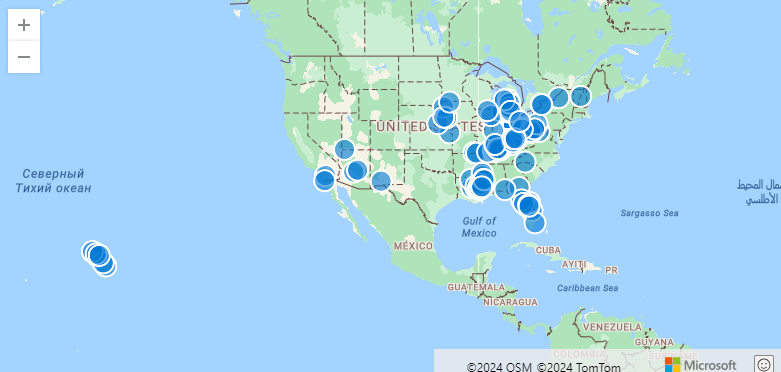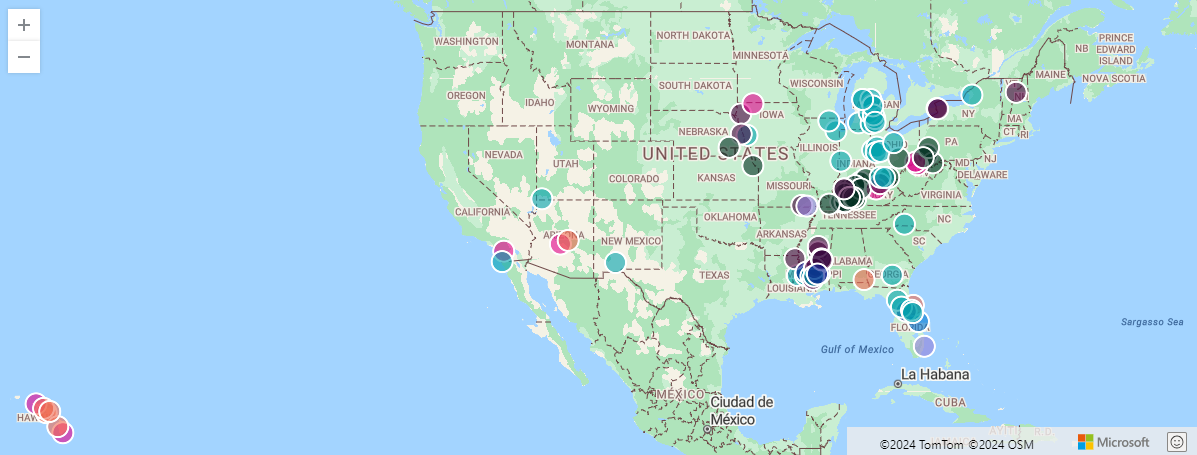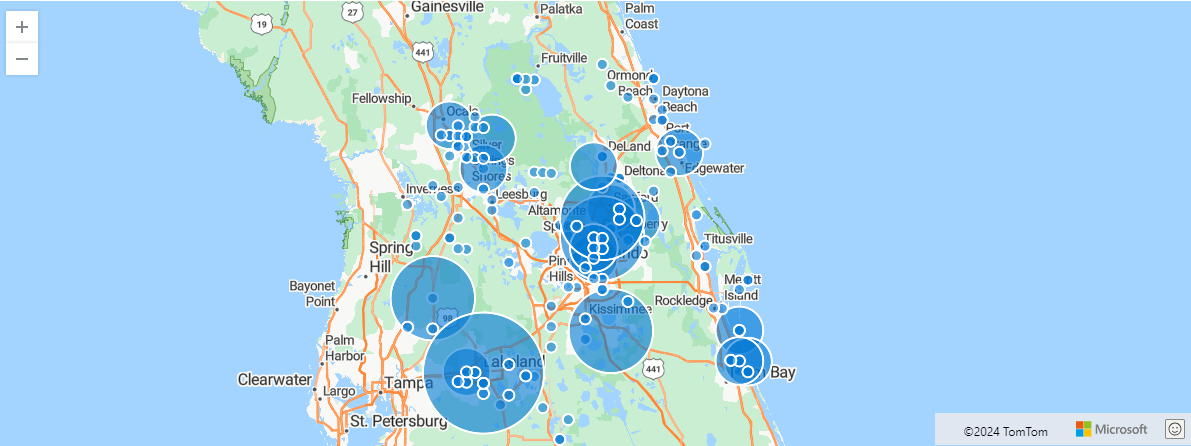Geospatial data visualizations
Geospatial data can be visualized as part of your query using the render operator as points, pies, or bubbles on a map.
Visualize points on a map
You can visualize points either using [Longitude, Latitude] columns, or GeoJSON column. Using a series column is optional. The [Longitude, Latitude] pair defines each point, in that order.
Example: Visualize points on a map
The following example finds storm events and visualizes 100 on a map.
StormEvents
| take 100
| project BeginLon, BeginLat
| render scatterchart with (kind = map)

Example: Visualize multiple series of points on a map
The following example visualizes multiple series of points, where the [Longitude, Latitude] pair defines each point, and a third column defines the series. In this example, the series is EventType.
StormEvents
| take 100
| project BeginLon, BeginLat, EventType
| render scatterchart with (kind = map)

Example: Visualize series of points on data with multiple columns
The following example visualizes a series of points on a map. If you have multiple columns in the result, you must specify the columns to be used for xcolumn (Longitude), ycolumn (Latitude), and series.
StormEvents
| take 100
| render scatterchart with (kind = map, xcolumn = BeginLon, ycolumns = BeginLat, series = EventType)

Example: Visualize points on a map defined by GeoJSON dynamic values
The following example visualizes points on the map using GeoJSON dynamic values to define the points.
StormEvents
| project BeginLon, BeginLat
| summarize by hash=geo_point_to_s2cell(BeginLon, BeginLat, 5)
| project geo_s2cell_to_central_point(hash)
| render scatterchart with (kind = map)

Visualization of pies or bubbles on a map
You can visualize pies or bubbles either using [Longitude, Latitude] columns, or GeoJSON column. These visualizations can be created with color or numeric axes.
Example: Visualize pie charts by location
The following example shows storm events aggregated by S2 cells. The chart aggregates events in bubbles by location in one color.
StormEvents
| project BeginLon, BeginLat, EventType
| where geo_point_in_circle(BeginLon, BeginLat, real(-81.3891), 28.5346, 1000 * 100)
| summarize count() by EventType, hash = geo_point_to_s2cell(BeginLon, BeginLat)
| project geo_s2cell_to_central_point(hash), count_
| extend Events = "count"
| render piechart with (kind = map)

Example: Visualize bubbles using a color axis
The following example shows storm events aggregated by S2 cells. The chart aggregates events by event type in pie charts by location.
StormEvents
| project BeginLon, BeginLat, EventType
| where geo_point_in_circle(BeginLon, BeginLat, real(-81.3891), 28.5346, 1000 * 100)
| summarize count() by EventType, hash = geo_point_to_s2cell(BeginLon, BeginLat)
| project geo_s2cell_to_central_point(hash), EventType, count_
| render piechart with (kind = map)

Related content
- Render operator
- Data analytics for automotive test fleets (geospatial clustering use case)
- Learn about Azure architecture for geospatial data processing and analytics
Feedback
Was this page helpful?
Glad to hear it! Please tell us how we can improve.
Sorry to hear that. Please tell us how we can improve.